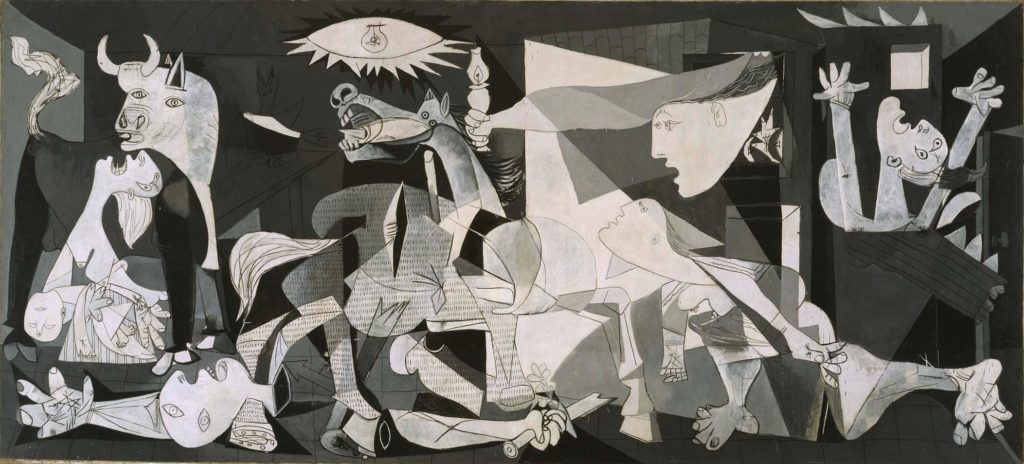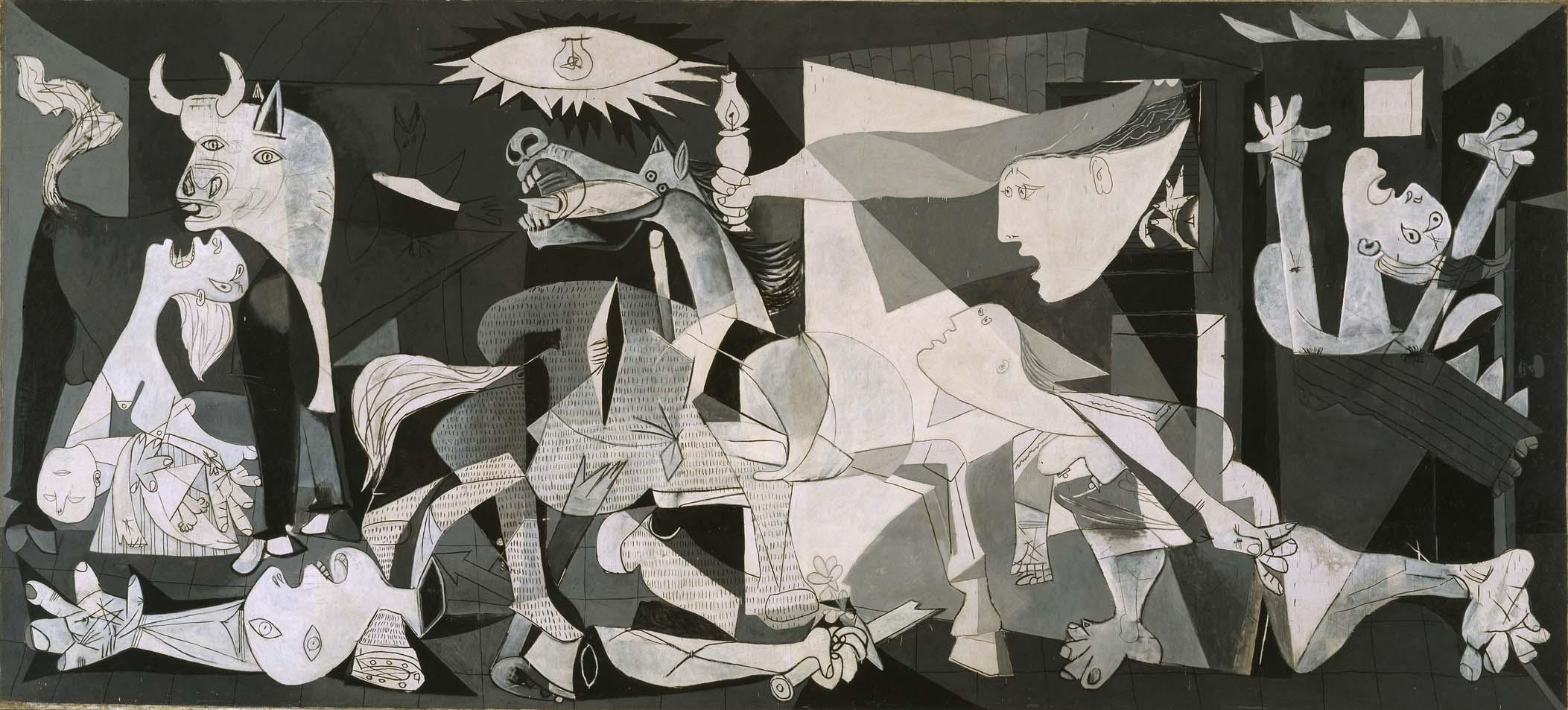

Painted May 1st-June 4th, Paris, France
Oil on canvas
349,3 x 776,6 cm
Location: Museo Reina Sofía, Madrid, Spain
The government of the Spanish Republic acquired the mural “Guernica” from Picasso in 1937. When World War II broke out, the artist decided that the painting should remain in the custody of New York’s Museum of Modern Art for safekeeping until the conflict ended. In 1958 Picasso extended the loan of the painting to MoMA for an indefinite period, until such time that democracy had been restored in Spain. The work finally returned to this country in 1981.
An accurate depiction of a cruel, dramatic situation, Guernica was created to be part of the Spanish Pavilion at the International Exposition in Paris in 1937. Pablo Picasso’s motivation for painting the scene in this great work was the news of the German aerial bombing of the Basque town whose name the piece bears, which the artist had seen in the dramatic photographs published in various periodicals, including the French newspaper L’Humanité. Despite that, neither the studies nor the finished picture contain a single allusion to a specific event, constituting instead a generic plea against the barbarity and terror of war. The huge picture is conceived as a giant poster, testimony to the horror that the Spanish Civil War was causing and a forewarning of what was to come in the Second World War. The muted colours, the intensity of each and every one of the motifs and the way they are articulated are all essential to the extreme tragedy of the scene, which would become the emblem for all the devastating tragedies of modern society.
Source: Paloma Esteban Leal, Museo Reina Sofía
